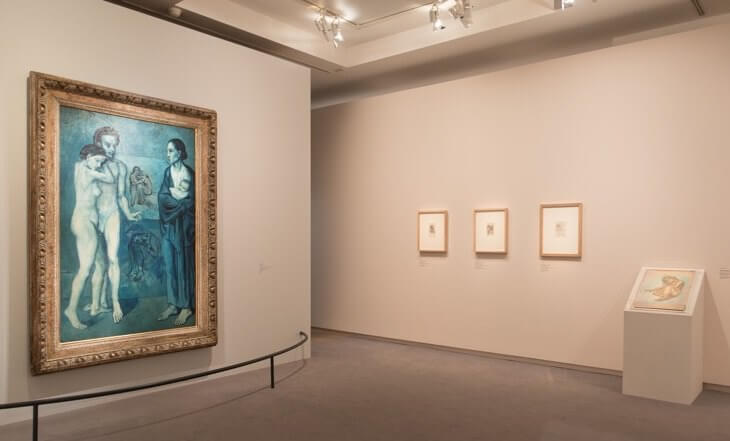La Vie, 1903 by Pablo Picasso

For all the countless works of art created over hundreds of years, only a select few have the power to thoroughly mesmerize, confound, and psychologically challenge the observer. Even fewer have the ability to temporarily divorce everyone from their firmly-held artistic preferences and transcend personal biases. They stand on their own merits, as independent artistic entities. Picasso's 1903 Blue Period masterpiece La Vie is one such rarity.
Pablo Picasso never intended for the world to have a clear understanding of the painting "La Vie", now one of the treasured possessions of the Cleveland Museum of Art.
As the artist once told author Antonina Vallentin:
A painting, for me, speaks by itself, what good does it do, after all, to impart explanations? A painter has only one language, as for the rest ..."
Picasso reportedly finished the sentence with a shrug.
What we do know, at least, are the tragic circumstances which brought about Picasso's legendary Blue Period. Born in Málaga, Picasso studied art in both Barcelona and at the Royal Academy of San Fernando in Madrid. He met another art student, a young Catalan named Carlos Casagemas. The two became the best of friends, and together they traveled to Paris in the summer of 1900.
Inseparable, Pablo and Carlos immersed themselves in the Paris scene, although they had to survive with severely limited means. Broke most of the time, they got by any way they could. Without money for prostitutes, Picasso painted murals on the brothel walls as "payment" in exchange for their services.
Unlike Picasso, Casagemas was not a frequent patron of brothels due to his sexual impotence. He did, though, become infatuated with a woman named Germaine. Germaine unfortunately did not return his affections, and the painful rejection sent Casagemas into a serious depression. He drank, he used morphine, and he relied even more heavily on the support of his friend Picasso.

The two young men, barely 20 years old, left Paris and returned to Spain. They stayed in Malaga and visited Picasso's family who was horrified at the slobby, unkempt, bohemian appearance of the boys. Still pining over Germaine, Casagemas' behavior worsened. Fed up with playing caretaker to his troubled friend, Picasso had had enough and sent Carlos away. After a stopover in Barcelona, Casagemas made a fateful return to Paris.
On the night of February 17th, 1901, Casagemas sat in L'Hippodrome Cafe with Germaine and several other friends. Suddenly, he pulled a revolver from his jacket and fired a shot at Germaine, who avoided the bullet by ducking under the table. Casagemas then put the gun to his right temple and fired another shot into his head.
Upon hearing word of his friend's very public, very violent suicide, a grief-stricken Picasso was thrust into a depression, further exacerbated by profound feelings of guilt for having abandoned Casagemas during his darkest hours. On the outs with his own family, penniless, and disillusioned, Picasso tackled his emotional turmoil and angst in the way he knew best - with tubes of paint. Blue paint. A melancholy, monochromatic palette. Moods of despair, sorrow, and isolation. Subjects marked by pathos and misfortune. From the brush of a gifted 20-year-old, at the dawn of the 20th century, on the heels of a harrowing trauma, the iconic Blue Period was born.
The painting is complicated and puzzling. Its inscrutable qualities have added greatly to its reputation. The male figure represents Casagemas, and notice how Picasso made his left leg taking a step forward, and his left finger making a pointing gesture. Picasso, in other words, made his friend "active". Undefeated, maybe? Picasso also gave him sexual love, with a devoted female nude figure leaning close against him. And Picasso also placed Casagemas with a family unit, the maternal love of a mother and baby.
But perhaps most telling about this painting - perhaps Picasso's most revealing statement of what he was trying to communicate - is found in the painting title itself: "La Vie"..."Life".
















